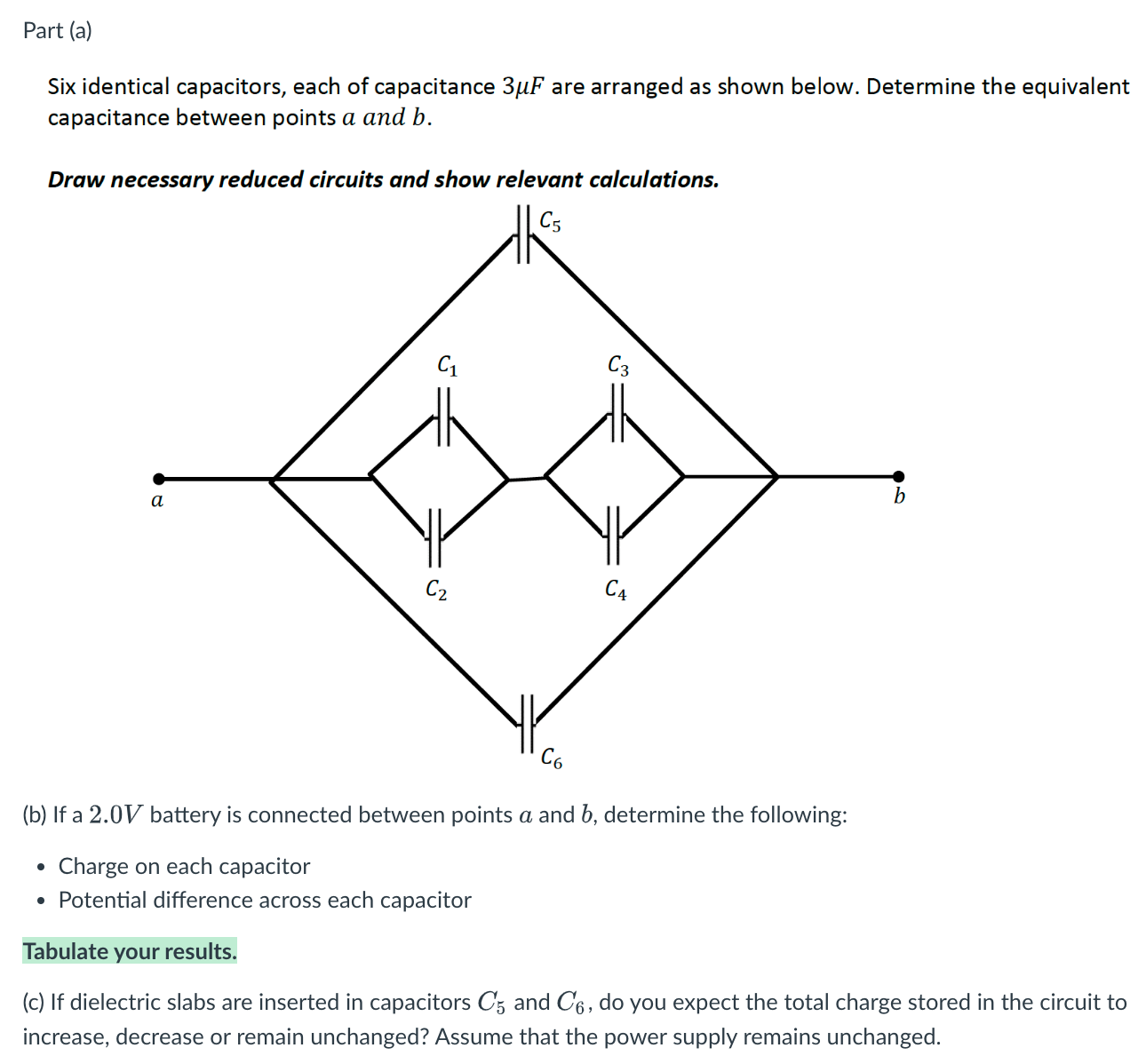Part (a) Six identical capacitors, each of capacitance 3 μF are arranged as shown below. Determine the equivalent capacitance between points a and b. Draw necessary reduced circuits and show relevant calculations. (b) If a 2.0 V battery is connected between points a and b, determine the following: Charge on each capacitor Potential difference across each capacitor Tabulate your results. (c) If dielectric slabs are inserted in capacitors C5 and C6, do you expect the total charge stored in the circuit to increase, decrease or remain unchanged? Assume that the power supply remains unchanged.
